Ahhh, fall. The gradual change in the air, the turning of the leaves, and the haunting calls of Sandhill Cranes as they gather to migrate south again. And to once again stalk the wily moose. Fall seems so brief up here that when September arrives you’re just itching to get out and enjoy nature and see if you can bring a tasty friend home for dinner.
During last year’s caribou hunt, we’d talked about trying a float trip down the Wood River this year for moose. And so early one morning Kevin May, Ken Severin, and I met up at Wright Air Service with all of our gear to fly out and get dropped off on the Wood River as it flows north out of the Alaska Range. Kevin flew out on the first flight with a bunch of our gear, and Ken and I joined him about two hours later on an airstrip cut out of the forest and running uphill. There was a horse-based hunting guide’s camp there. He’d come in from the south.
We had our boats inflated and our gear assembled by around noon and headed out. The Wood River is a much faster and wilder river than the Itkillik was last year, and it was a white-knuckle ride. We stopped briefly after a mile or so to have a snack and talk, then hit it again. We each had a small radio (walkie-talkie) to keep in touch, and it was helpful—when you could spare a hand to talk. The river is one where you have to keep your oars busy most of the time.
The plan was to have Kevin May, the most experienced, in the lead to aim for the best passage, followed by Ken, then with me bringing up the rear. I got into a different channel at one point, and when I got back to the main channel I wasn’t sure whether I was ahead of the other two boats or behind them. I finally spotted them going around a bend below me and rowed on to continue bringing up the rear. Kevin had warned us about the many sweepers in this river, and with the fast current and rapids it took some serious effort to miss the worst of them—sweepers and rapids. And it was all going by so fast!
Ken and I had both gone under a couple of airborne sweepers, ducking below their hanging branches, and another—a low-hanging spruce—was looking inevitable. While rowing hard to miss as much of it as I could, I almost missed seeing Ken getting swept right out of his boat. I had to look twice to be sure, but, yes, he was in the water reaching out to grab his boat. I hit the bottom of my boat and hung onto my hat as I went under the culprit—the smell of bruised spruce was strong in my nostrils. I came up fast and grabbed my oars and maneuvered to come up behind Ken to grab him and his boat.
At a shout, he turned around and grabbed my boat, and we worked first to try to get him up and into his boat, then, failing that, we tied our two boats together as we swept along. Even together we didn’t have the strength to get him up into his boat. We drifted rapidly along in the current, with Ken occasionally bouncing off a rock. We were unmaneuverable, so all we could do was hang on knowing that eventually we would hit shallower water. That finally did happen, and we all hauled into shore, Kevin now bringing up the rear to help however he could. Ken needed to get warmed up. We’d drifted probably close to half a mile, and the water was cold. All we lost was Ken’s radio and his hat. We decided to camp there. Ken put on his dry clothes, Kevin put up his large tipi tent, we got a fire going and heated water, and we settled in. Kevin called a bit for moose, and we did see a spike bull at a distance across the river near sunset.
During the night, I felt vibrations coming up through the ground and faintly heard galloping hooves as I slept. I recall thinking that a moose was probably walking very close to my tent and also hoping it didn’t accidentally step on me. Sure enough, after getting up at dawn and looking, a moose had indeed walked by just inches from my tent and head.
We leisurely struck camp and packed up the boats. After yesterday’s lesson in “Yes, this a dangerous river,” we made sure everything was tied and strapped in well. We had another eight miles or so to go to our intended camp. As we launched, Ken said something about getting back on the horse that threw him—then we were off into the maelstrom again.
There is a lot of white water in this river, and the current moves very fast. It is a rather braided river, so you have to choose channels carefully, looking out for shallower spots (where you can get grounded), and sweepers, boulders, submerged trees, logjams, and large standing waves in the roughest rapids. The standing waves often reach three feet high (and I swear we went by a couple four-footers), and if you hit them you are at least likely to ship some water. After hitting one set sideways—not pleasant—I aimed better afterwards, preferring to skirt their edges if possible or hitting them bow-on if not.
You find yourself pointing in all directions at various times, though I tried to be aiming forwards for most of it. It was a lot of work to navigate successfully, using the oars in just about every style of rowing imaginable. In one wild set of rapids, my oar stop (a collar that keeps the oar from slipping out of the lock) popped loose so that only my grip on the oar kept it aboard. It was really hard to row with it so loose in the lock. It is rigged so that it can slide inward—necessary to prevent it from breaking when hitting rocks and other unyielding things in the water—but without the collar it slid in both directions. I was finally able to stop and fix it with the screwdriver on my Swiss army knife.
With such a fast current, it didn’t seem to take very long to make it, accident free, to our intended campsite, a gravel bar with a lot of meadows around it. We unloaded the boats and set up camp with our rifles handy. We each chose the perfect bed of Wood River sand where sleeping would be most comfortable. Then we began hunting, first scoping out the area. Kevin May had hunted this area before, the last time five years ago. He’d wanted us to come out a week later so the bulls would be sure to respond to our calling, but Ken and I had other obligations that didn’t fit so well with the sex life of the moose. So we were here a little early. There were a lot of tracks about, but most were more than a few days old.
Well before dawn on our first morning in this camp, I could have sworn that I heard sirens, like a fire engine and several police cars. When we got up later, I asked Kevin whether he’d heard them. He hadn’t, and he insisted that we were too far from Fairbanks to have heard sirens from there. I was sure he was right, but couldn’t figure out what I’d been hearing over the river noise. After a cup of tea and a bite to eat, we headed out to hunt. Ken and Kevin went south, up-river, and I headed north, down-river. It wasn’t long after I began my walk that I heard a pack of wolves howling—the sirens. I found a lot of tracks—wolves, brown and black bears, coyotes, and, of course, moose. I spent much of the day sitting and looking out over a marshy meadow, but I also walked downriver about two miles to get the lay of the land. No moose, but a lot more tracks.
With a distance between us of nearly two miles where we intended to sit and watch for moose, Kevin suggested that we try calling from both spots, so that’s how we spent our second day of hunting. The weather was very nice, and I heard one moose grunt in response to my call, but no moose walked out into my meadow.
The next morning as we sat calling and watching, it began snowing. This is the 12th of September—a little early for snow, even at this higher elevation. We heard some responses to our moose calling, but didn’t see anything. As dusk closed in, hundreds of Sandhill Cranes were migrating south into the Alaska Range. The cloud ceiling looked awfully low for them to be able to get through those passes, but the snow must have been a powerful incentive to get out of town. Some of the cranes seemed reluctant to go higher, and they began to turn around and head back north. After awhile, all of them were returning and leaving the range to go back the way they’d come. With all of their calling, this was quite a spectacle.
One cool thing about the fall migration of cranes is that you can hear the anatomical differences between the adults and young. As cranes mature, the trachea becomes elongated and grows in a loop within the keel of the sternum. Adults have the haunting calls that resonate and carry long distances, while the young basically just peep.
With the cold, wet weather, Kevin got the wood stove going in his tipi, and we had a nice warm dinner in there. Afterwards, we emerged into a clear and spectacular sky, with the stars blazing and a nice aurora arcing across to the north. It froze hard in the night, and the next day continued moose-less. I didn’t even get a response to my calling. On the day after that it warmed up, but a low overcast deteriorated into drizzle and wind in the afternoon. The cranes tried it again. Oddly, they waited until late in the day again and then turned around and went back north before dark.
Sitting and watching for moose all day can get a little boring a times, but your brain goes into a hunting mode and time can pass quickly. Occasionally I’d get cold sitting and would take a slow walk hunting through thicker cover. My spot was close to the river, and sometimes it would make a noise that would tug at the attention. The river has a deep base hum to it, and it also makes occasional popping or banging noises as the fast current causes things to lurch in the deep. No moose activity for me all day.
So the next day I went with Ken and Kevin to the south, where they had been hearing moose. There was a richer habitat mosaic that way, with a lot of places to watch. We had a nice Rough-legged Hawk come by and check each of us out, and a Northern Shrike did, too. In the afternoon, Kevin rowed across the river to call and check out a wallow. We heard a few breaking branches on our side, but we didn’t see a moose all day.
With a cold breeze and drizzle coming out of the south, the darned cranes came back and tried it again—and late again, as usual. This time they didn’t return, though. I was surprised, given the low ceiling, and wondered if maybe some were hunkered down to roost in a snowy pass up there somewhere. Sure enough, the next morning a bunch of cranes came out of the range to retreat north once more. This is an amazing spectacle to have seen three times. They are hardy, and wonderful birds to see, but apparently they are not too bright.
We eventually broke camp, loaded the boats, and headed out mooseless. We had hopes of finding a moose along the way or at the airstrip before being picked up to fly out, but having a good time is the most important thing, and we had certainly had that. And the fun wasn’t even over yet. Back in the fast current, we raced downstream. We had about 14 miles to float as the raven flies. That’s a lot of river miles. After an hour or so, we pulled over to walk our boats into a correct channel so we would miss a fast, narrow channel that Kevin knew to be dangerous from a previous trip.
We hit enough rough water to take some in, and at one point Ken asked us to pull over so he could bail some of it out. He was bringing up the rear at the time. Kevin pulled over rapidly, and I followed suit, grabbing onto a cottonwood log on a shore with a rapid drop-off at the water’s edge. Ken came in behind me and leaped out of his boat with the stern line in hand. We were still in a strong current, and Ken said to me that his boat was going to hit mine. I focused on the log and grabbed it more firmly and so missed what happened next. Ken’s boat flipped right over! It must have ridden part way up on mine and the water caught the lower edge. We tied my boat up and walked Ken’s around it, then pulled his ashore and flipped it back upside-right. A complete bail. All of his gear was still there. We’d done a good job of tying and strapping things into each of our boats, but some of his stuff had shipped water. When I pulled Ken’s hard-sided gun case open a bunch of water poured out. He inspected things, got rid of some more water, re-tied and re-strapped, and then we were off again.
Kevin’s boat skills are excellent, and it was good for Ken and me to be able to follow his lead and learn. But in a current this rapid, things happen fast. Often it doesn’t matter if you hit a shallower spot or hit some rapids in a certain way because you are a couple of feet to the left or right. But sometimes it does. We were seeing more huge rocks that needed to be avoided. At one point Kevin got hung up on one in mid-river. These are wild, dangerous places to get stalled, and I wondered whether the roiling current would catch the boat’s edge and flip it. But as his boat tipped precariously, he hit the floor to lower his center of gravity and waggled the boat off before anything bad happened. At another spot, Ken got a little too far over on one side and got caught behind a sweeper. Kevin and I were out of sight by the time we could pull over. I walked back up on the opposite bank to see how he was doing. He was unloading his boat and hauling it around the blocked area via the shore. Kevin and I were in contact on the radios; he rowed across and walked upriver to help Ken. I returned to my boat to bail it. The moose track density at this spot was the highest I’d ever seen. Too bad we weren’t hunting here.
Soon enough we were back on the river dodging large boulders, sweepers, log jams, and large standing waves. We were fairly nimble without loads of moose meat in our boats, and we were able to miss most of these obstacles. Occasionally we would hit shallower spots and get grounded, but we could usually work the boat off with one leg out and pumping along like the boat was a giant skateboard. I should mention that this type of travel is really hard work, and that it’s non-stop. You are working the oars almost constantly, and at times with furious strength. Several times I could actually see Kevin’s and Ken’s oars flexing because they were pulling so hard.
I had been singing the old Dobie Gray song “Drift Away” for awhile when I watched first Kevin and then Ken do a nice zig around one bend and then a quick zag around another, missing both of the bad areas on the outsides of the two bends. I did likewise on the first, but was coming in too far to the left on the second and couldn’t get across the current fast enough despite rowing very hard. It quickly became clear that I was going to hit the worst part of the water boiling up onto a log jam. And then it happened—and in an instant I was under the water under the log jam. That was quite a surprise, but I didn’t have time to think about that because the current had me pinned up against downward-projecting branches and I wasn’t able to progress farther downstream. This was a hard, raging current. I realized that I’d have to turn around and exit the way I’d come in, so I turned around and fought my way back out. It was a surprisingly long distance. I recall thinking that a person could die in such a situation if they lacked the strength to push out against such a strong force. I’m glad I’m strong.
I exploded out and up onto the log jam, noticing that my boat had flipped over and was loose and drifting downriver with the current. I climbed to the top of the log jam to wave to Kevin and Ken that I was all right; they had just seen my boat emerge around the bend without me. Ken pulled over, I dumped my hip waders, and Kevin rowed into place to catch my boat. Ken had me join him in his boat, and we went down to join Kevin, who had hauled my boat ashore and flipped it. Another full bail. All I’d lost was my hat. I had a ding on one shin and on my head, but other than being soaked I was fine. We emptied some water out of things like the rifle case and on we went. Rowing is hard enough work that I wasn’t cold. I was wearing a long-underwear shirt and a wool shirt and a cotton flannel shirt and a rain coat and a life vest and jeans and hip waders. Not the best of fall swimming apparel, but warm enough when wet and working hard.
We kept going until we reached the air strip pullout a couple of hours later. We had no more incidents. At the strip we walked first to it, then along it, then off the other end to see if we could get the boats any closer. I kept stopping to dump more water out of my waders, where it pooled as it slowly ran down. We decided to stay where we were—it was going to be a good haul to the strip, but it was probably the best spot. So we set up camp. Ken and I had a lot of wet gear that we spread out on the ground and in nearby trees. My tent and all my footgear were soaked. Kevin had the brilliant idea to use a dry tarp inside the tent. I still had one (well, damp; everything was at least damp by now). I sandwiched my wet sleeping pad in it and so had a reasonably dry surface to sleep on. There was no question about it, though—both Ken and I were sleeping on shrinking islands of damp. When we got set up, I changed into my dry clothes. I’d brought an extra set of clothes just for this, although I’d expected to get wet from rain, not from swimming. They were damp, too, but they felt great.
As darkness fell, a large flock of cranes came in and circled low overhead calling constantly before landing to roost for the night out on a gravel bar. Shortly before that, a skittish moose calf had loped by out on the flats. We had our last Mountain House dinners in Kevin’s cozy tent. He’d put up the wood stove, and we had a lot of wet gear trying to dry out in there.
Unlike last year, we didn’t have any dessert meat to enjoy on this trip. Without getting even one moose, we had to live on what we’d brought. In packing, I’d decided to start using up some of the older dehydrated camping food we had stored in the garage. You know the stuff—the odd packages you’ve carried for years, but they don’t look that appealing and so get left for last. And then you get that wild game or fish or don’t get stranded for an extra day or two and they return home with you. Well, I had some that were 15 years old. Let’s just say that some brands are better than others, they don’t improve with age, and I was glad to have brought salsa. It turned out, in fact, that all three of us had brought substantial doses of salsa, so every meal was enjoyable.
It rained quite a bit in the night and it continued in the morning, so we slept in and got up slowly. The cranes had moved some in the night and they finally all lifted off and left shortly after dawn. We had a leisurely cup of coffee in Kevin’s tent and while doing so the rain stopped. Then we began hauling our gear to the landing strip, a 20-minute round trip. First we strapped half an oar near each end of a boat, then flipped it up over our heads onto two sets of shoulders and carried them that way. It was awkward and bouncy, but easier than carrying them deflated and rolled. We broke for some lunch, and afterward Kevin called Wright Air. They said they could come and pick us up in the afternoon if that was okay. We said it was and so humped the rest of our stuff up to the air strip. Just as we got it there (all but Kevin’s tent, which he wanted to keep back just in case they couldn’t do two flights), a plane came in. The pilot took out Ken and me and a bunch of gear. Another pilot came in shortly thereafter and picked up Kevin and the rest of the gear. We parted ways at the airport a little after five. We’d heard of one party that had flipped their boat and lost their gear and had to be pulled out. We also heard that there were four people behind us who had flipped several times and lost a lot of gear but had one moose. So there are many stories to be told about Wood River hunts.
Epilogue: The only thing I didn’t enjoy about this hunt was the need to totally disassemble and clean my semi-automatic .30-06. They are just not made for submersion. Fortunately, I was able to wait on this until I got home, where the living-room floor served as a better workbench than any gravel bar. It turns out that I also didn’t take enough pictures. Keeping the camera dry meant having it inaccessible most of the time.
Oh, what are the values of getting nothing, you ask? First, while we did not get a moose, those of us who enjoy hunting tend not to focus on that result, because that improperly elevates this absence, this nothing, to overshadow the positives. Being out and hunting and seeing new country and sights is always fun and rewarding in itself. True, you can get that and game from time to time, but it wouldn’t be hunting if you always got your quarry. Not having gotten a moose on this trip probably meant that we had fewer mishaps on the river, too. Being more nimble on the water was advantageous, and we were grounded less often than we would have been if we’d been heavily loaded. We also would likely have lost some meat from flipping our boats if we’d had any aboard. So, I think we all enjoyed the trip. Note for next time: bring more dry bags and maybe a swimming suit.

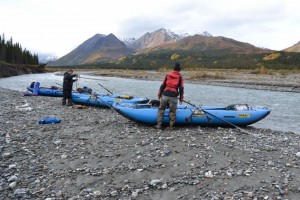
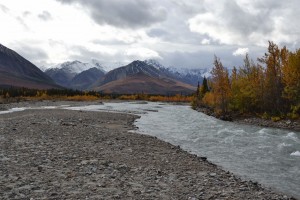
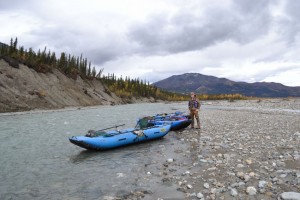
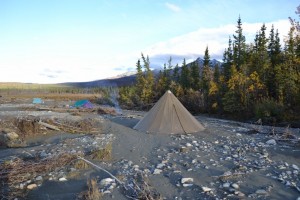
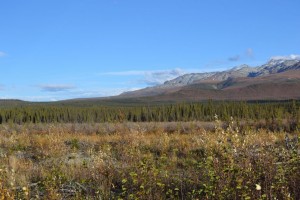
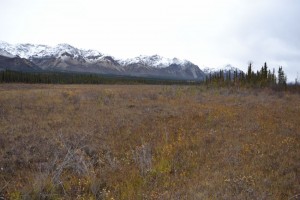
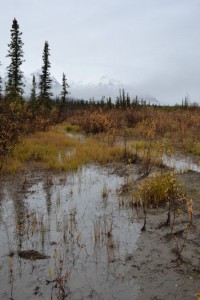
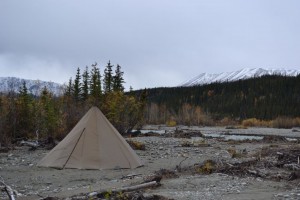
Wow! I wish I’d read this before we talked yesterday. You’re a lucky fellow being strong and all.
Dobie Gray
I thought that was a Doobie Brothers song and remember Sean always thought he said “give me the beach boys and free my soul…”
As always a great adventure and I love that when I click on the photos they come up nice and large.
Glad you enjoyed it. Dobie Gray did the best version recorded, I think. I do remember “Give me the Beach Boys and free my soul…”!
OMG your “adventures” scare the daylights out of me! Under water and a logjam, strong current, hip boots full of water???? It’s a miracle you got out of there!!!!!
No big deal. Arriving under there was a little surprising, but I still had air to spare when I came back up, so it wasn’t as bad as it might have been. It was a good lesson in becoming a better boatman. Ideally, next time I will zig and zag as well as those who went before me!
Holy moly! What an adventure!
Now, that’s an adventure!